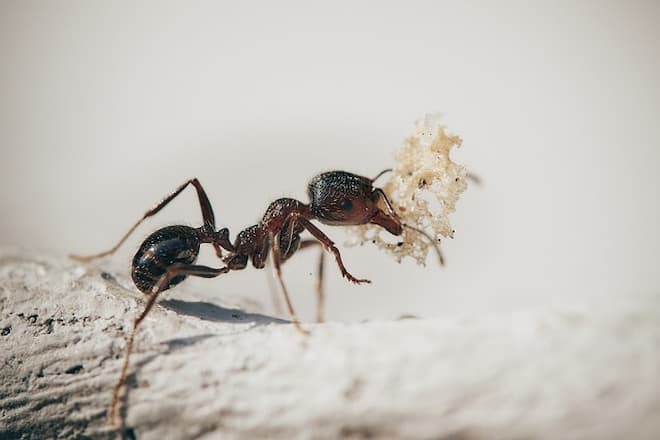Your house is your safe haven, a place where you feel whole and at ease. Now, what if it’s being attacked in secret by an enemy you can’t see? That’s right, those amazing builders called carpenter ants could be putting your house at risk without you even realizing it. Check out this piece to learn more about carpenter ants, how to spot them, and what you can do to keep your home safe from damage.
Get to know the Carpenter Ant.
People often mistake carpenter ants for termites because they eat wood. But they are different in ways that make them stand out. Worker ants in this species are some of the biggest in North America. They are 6 to 13 millimetres long. Some of the colours they come in are black, red, and a mix of the two.
Carpenter ants are especially scary because of how they build their nests. Carpenter ants make their nests by digging holes in wood. Termites, on the other hand, eat wood. Long-term, this tunnelling weakens the wood’s structure, which could cause serious damage if not stopped.
How to Tell If You Have a Carpenter Ant Problem
Finding a carpenter ant problem early on is very important if you want to avoid major damage. Keep an eye out for these signs:
- Sawdust (Frass): Carpenter ants don’t eat wood, but they do move the frass, which looks like sawdust, out of their homes. It is a strong sign to find piles of this stuff, especially near wooden buildings or window sills.
- Talking Sounds: If you have a lot of carpenter ants in your home, you might hear soft talking sounds coming from inside your walls. The ants are making these sounds.
- Winged Ants: Mating carpenter ants, which are often called “swarmers,” leave established colonies to start new ones. There may be a problem if you see big flying ants in your home, especially near windows.
- Hollow Wood: Tap on home wood surfaces to hear how they sound. If they sound empty or like paper, it could mean that carpenter ants have tunnelled a lot.
Fifth, Ant Trails That Can Be Seen: Carpenter ants leave foraging trails that can be seen, especially at night when they’re most busy. You can get to where they nest by following these tracks.
Looking after your home
Keeping carpenter ants out of your home is important for keeping its structure safe. You can do the following:
- Keep the right amount of wetness in the air. Carpenter ants are drawn to wood that has been damaged by moisture. Take care of any leaks or water damage right away.
- Two. Cut back trees and bushes. Keep the plants around your house cut back and away from the building to keep ants from finding ways in.
- close Entry Points: Look for cracks, gaps, or openings on the outside of your home and close them. Pay extra attention to the places in your home where utility wires enter.
- Store fuel correctly: Keep it off the ground and away from the outside walls of your house. This makes it less likely that ants will build a nest in it and then move into your home.
Professional Pest Control: You might want to have a professional pest control company check your home on a regular basis. They can spot possible problems and fix them before they get worse.
In the End
Carpenter ants aren’t as well known as termites, but they can still do a lot of damage to your home’s structure. Be cautious about keeping pests away and watch out for early signs of infestation to keep your home safe. Do not be afraid to get help from a professional if you think you have a carpenter ant problem. The best defence against these silent attackers should be put up in your home.
Affordable, high quality, and professional ant exterminator porthope, done by insured and licensed exterminators.

